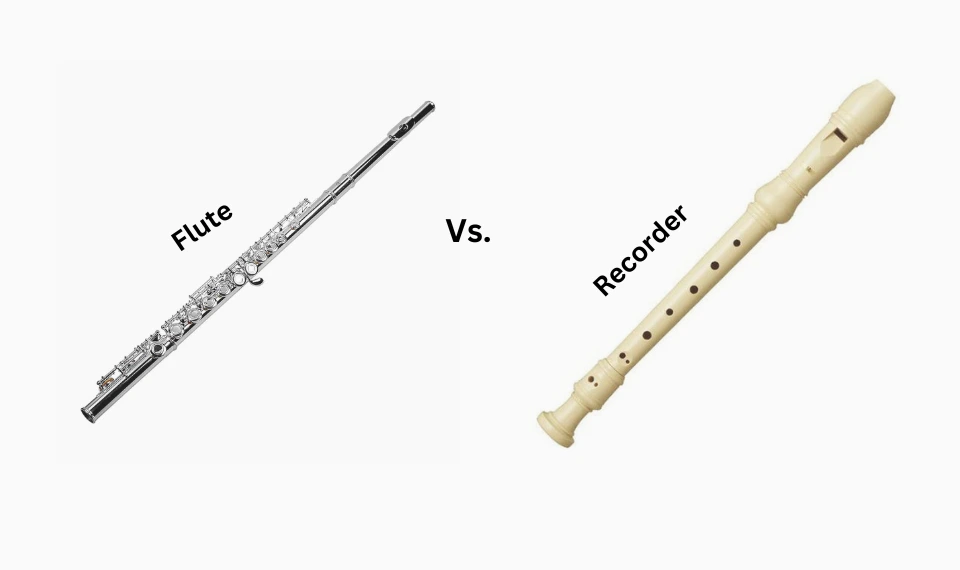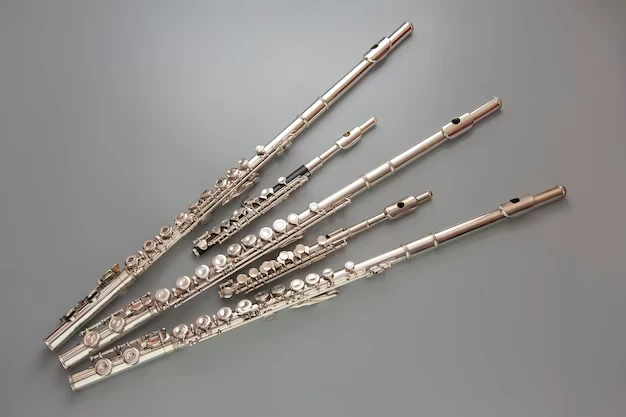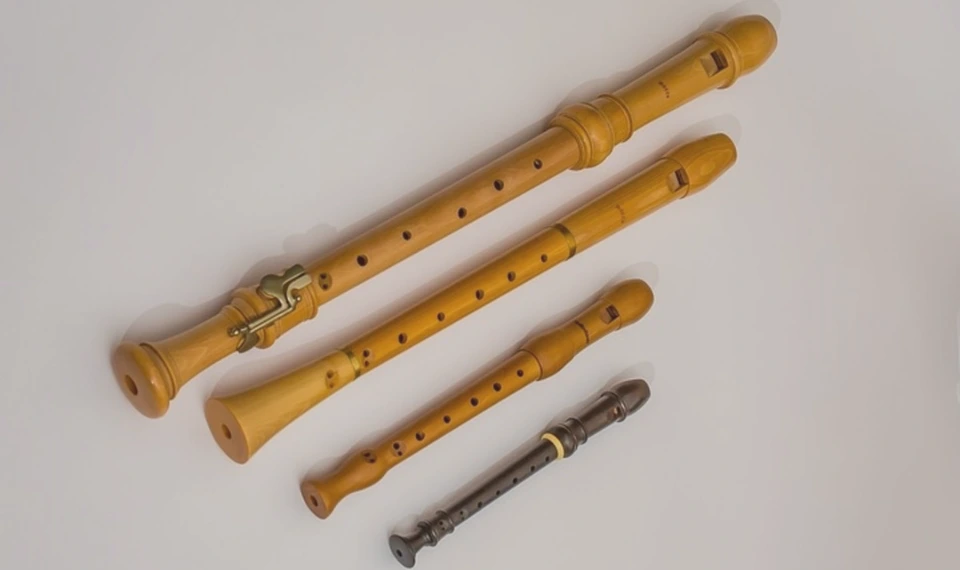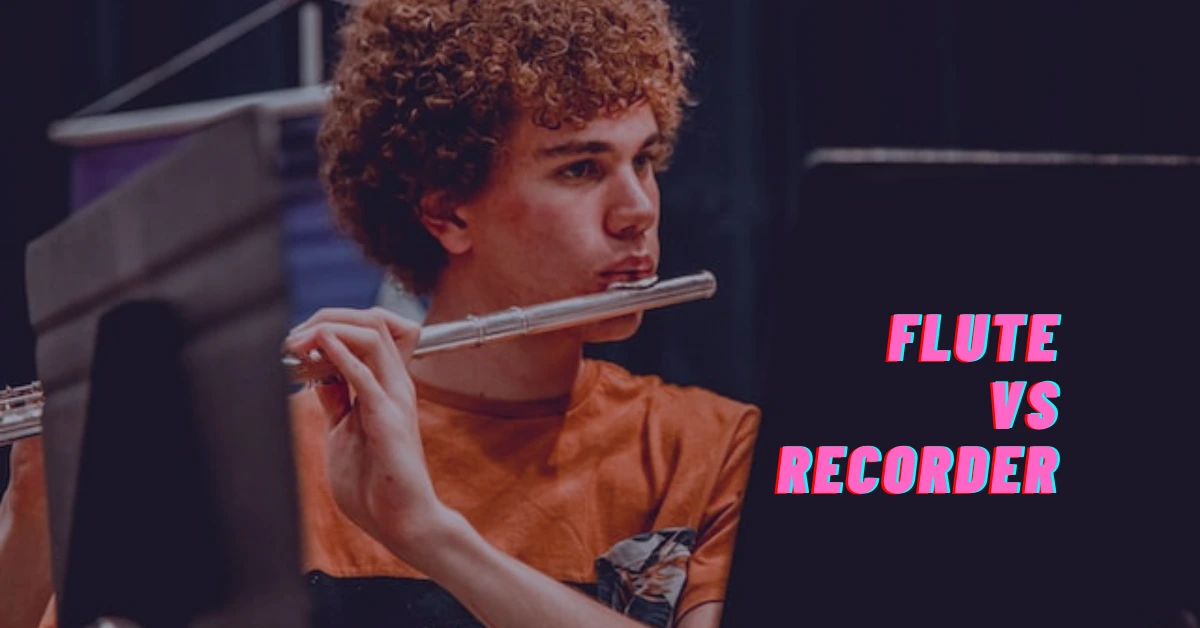Do you want to learn the Flute vs Recorder but need help deciding which one to choose?
The flute and the recorder are both ancient musical instruments that are popular today. They have evolved from simple primitive tools to sophisticated instruments requiring great skill. The ability to play them both musically can do wonders, regardless of their basic construction.
Understanding the differences between these two instruments can help you decide if the flute or the recorder is the best choice for you. As both require different styles of playing, each requiring its own set of techniques and skills, this article will compare and contrast these two various woodwinds—and hopefully give some clarity to an often confusing decision-making process.
Difference between Flute and Recorder

Flute and Recorder are made from the same target, but all are developed gradually. Though they have some similarities, differences are equally shown.
| Flute | Recorder |
| The most common variant flute is the western concert flute. | The Recorder is a woodwind instrumental setup with a unique sound. |
| Blowing across the mouthpiece hole creates the sound. | An inner tube directing airflow across the tone hole’s edge creates sound. |
| Side-blown flutes are used in western concert flutes. | The Recorder is just a fipple flute. |
| The main portion of concert flutes in the West consists of wood or metal. | Recorders can be made of plastic, ivory, or wood |
| Western concert flute assists horizontally | Recorder assists vertically. |
Types of Flute

There are several types of flutes. But flutes can be considered into several broad groups: side-blown, end-blown, fipple flutes, and non-fipple flutes.
1. Side Blown Flute
They are played by holding them horizontally and are also known as transverse flutes. The player has to blow across the mouthpiece in the flute. Keeps the flute’s body length straight.
2. End Blown Flutes
Flute end-blown instruments are played by blowing on the appliance’s end. Examples of this kind of channel include the Xiao, kaval, danso, and Anasazi flute. Time of playing they are When being played, these flutes are held vertically. Tin whistle and Recorder are two examples of fipple flutes. It holds vertically.
3. Fipple Flutes
Flute fipples have a narrow mouthpiece. When being played, these flutes are held vertically. Tin whistle and Recorder are two examples of fipple flutes.
4. Non-Fipple Flutes
No constricted mouthpiece exists on no fipple flutes. Most of the instruments in the flute family belong to it.
However, in modern usage, “flute” mostly refers to the crosswise wood or metal instrument known as the “western classical flute.” Beginning with the note C4, they are in the key of C and range over three and a half octaves. Although C 7 is often considered the highest pitch for western flutes, skilled players may be played to hit even higher notes.
Types of Recorder:

1. Soprano Recorder
The soprano recorder is the most popular variant of the recorder. Due to its versatility, the instrument has a dual-octave range, making it a familiar sight in novice and educational music circles.
2. Alto Recorder
The alto recorder is larger than the soprano recorder and has a deeper pitch than the soprano recorder. It encompasses a pitch range of two octaves, making it a popular choice in orchestras and ensembles.
3. Tenor Recorder
The tenor recorder, a larger version of the alto recorder, delivers a lower pitch and covers a range of one and a half octaves. Early music groups often incorporate this instrument into their ensemble, as it offers a distinct quality to their repertoire.
4. Bass Recorder
A bass recorder produces all recorders’ most powerful, lyrical sound. It’s frequently utilized in an orchestra and early music ensembles, where its deep and mellow timbre adds depth to the ensemble’s tonality.
Similarities between flute and Recorder
Flute and Recorder are both wind instrument family members. Compared to other woodwind family members, they are a little affordable and handy compared to other woodwind family members. Composers used both to represent birds and birdsong.
History of Flutes and Recorder
Musicians are well known about the flute at very early ages. In the Swabia Jura region of modern-day Germany, flutes dating from about 53,000 to 45,000 years ago have been discovered.
During the middle age in Europe, the Recorder becomes the most widely popular instrument of all end-blown flutes. In lively performances, it was seen from the 15th century to the 17th century.
Which one is easy to learn: Flute or Recorder
One must develop a mouthpiece to play music over the flute. The differences in embouchure between the flute and Recorder are more significant than variances in finger holes, articulations, and other similar features. Anyone can use Recorder for the first time, but this does not apply to the flute. The main key system is embouchure to play the flute.
There are many differences between the flute and the Recorder, such as materials, positioning, sound, features, and price. The flute is one of the most reasonable of the woodwind family, especially when you don’t have to buy reeds like all other orchestral woodwind family members.
If you want to start making music at a very early age, Recorder suits you. The Recorder is easier to play than most instruments. These differences might be the best guide to decide which one is preferable from person to person.
Conclusion
The flute is considered in western and eastern music and regarded as one of the world’s earliest musical appliances. Though flute and Recorder come from the same origin, they have developed gradually over the centuries. The Recorder is easy to use than the flute. Because embouchure has no function, the other hand flute is difficult to play. Both are making for the same principles, though some technical issues are related to them.


